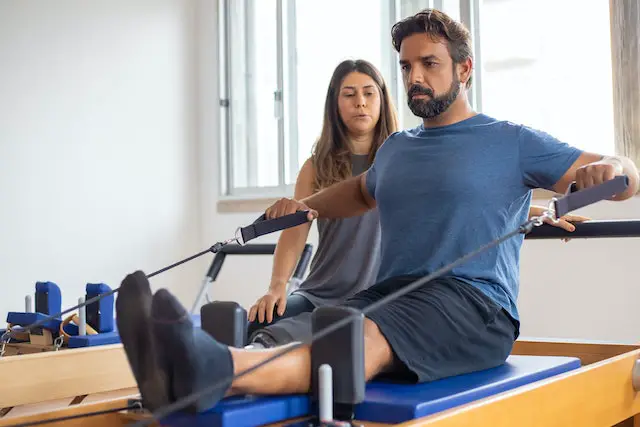Any teacher of any subject has run into this problem. You give someone an instruction and it gets carried out in completely the wrong way. You then modify the words you use, and they do exactly what is needed. Let’s take a look at the subject of coaching cues.
What Do These Words Mean to You?
As a personal fitness trainer, I am constantly giving instructions (or cues) to people in order to correct their form. Sometimes those instructions aren’t carried out as I intended.
I often say something like, “Straighten out your back” and I’ll get something funny, like the person just looks at the ceiling. No joke.
Now, this isn’t to poke fun at people, but they are already in an uncomfortable position and most of them already think that they don’t have anymore “straightening” in them.
But then, to that same person, I say, “Stick out your butt.” At that point their lower back gets into position as well as the rest of their spine.
That is the cue that works for that person.
Finding What Works
As a fitness instructor, it is my job to find out what verbal cues each individual responds to.
What they respond to is tied to how well they know their body, anatomy terms, and their familiarity with common exercises.
A doctor may understand my cue of “Extend your lumbar spine.” But it is unlikely that the soccer mom I’m training is going to respond to that. For your average person, I would say “Stick out your butt.”
Giving Orders
If you are working with high-profile clients such as the top businessmen and women in town, your average trainer may be backed off on giving direct orders to them.
I’ve seen new trainers get stuck on this point and totally botch their cues.
Instead of saying, “Now grab the 45 pound dumbbells, hold them at shoulder height and press up to a straight arm.” They will say “Could you pick up these weights?”
Something that should have been said in the imperative is now said in the interrogative. In other words, what was supposed to be an order was turned into a question.
It is okay and necessary to speak in the imperative (i.e. “Pick up the weights.”) because that is clear and concise coaching. But, among too many people in society, this thing on “control” is a bit goofy. New trainers get intimidated by rich and powerful people and change their style.
No matter who your clients are, if they are paying you to train them, they are paying you to give crisp, clear, executable orders that they can execute to achieve their fitness goals.
If you’re a fitness trainer, that’s your job.
Examples of Coaching Cues
Here are some examples of coaching cues you may hear in the gym:
- Keep some softness in your knees – meaning don’t lock your knees
- Raise your chest – meaning straighten your back
- Stick out your butt – meaning straighten your back
- Don’t look down – meaning straighten your back
- Tuck your chin – meaning straighten your back
- Stick your chest out – meaning straighten your back
- Breathe through your stomach – meaning use your diaphragm instead of your chest
There are an infinite number of cues, instructions and orders given in a gym, but these are some that are often slightly indirect. They are indirect because not everyone has studied anatomy. So you’ve got to make it real to the person in whatever way you can.
Trainers may try a few cues before they get the right one. But just knowing that different people respond to different things will help you get along.
Nonverbal Coaching Cues
I’ve been able to overcome many situations just by physically demonstrating the movement.
This sometimes involves me showing them what they are doing, then having them exaggerate it and then do the opposite.
For example, if they’re doing it slouched, I’ll have them slouch more. Then I’ll have them unslouch. That’s when they get it.
There are many ways to communicate to your clients.
Observation
Before you can give the right cues, you need to be able to see and assess the person in front of you.
You may have graduated from your fitness certification with flying colors. Maybe you have a degree in Exercise Science. But that means nothing unless you can identify what is going on with the client in front of you.
Coach Glassman says it best here:
Conclusion
Fitness training, coaching and giving cues are actually arts. You can’t just dumb it down to “Execute steps 1, 2 and 3.”
It takes a firm knowledge of the body, of movement and how stressing the body produces changes over time. You’ve got to have some awareness of other people and their emotions. You’ve got to be able to see and to hear and to really perceive what is going on.
Only then can you start giving real cues, based on accurate observation.
Then you’ll have happy clients achieving their fitness goals.



